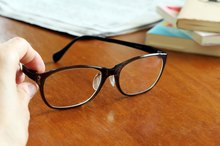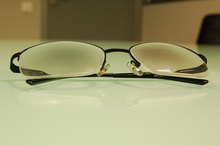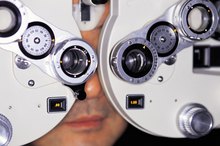How to Make Your Own Eye Chart
The most common way to test visual acuity is with a group of variable-sized letters placed on a chart. Called the Snellen chart, it is used in doctors' offices to evaluate the need for glasses. The Snellen chart may be a physician's tool, but you can make one to test vision in the privacy of your home. The chart does not fully replace a trip to the ophthalmologist, but it can be used to estimate vision loss.
Use proper fonts 1. The Snellen chart uses a specific font. When creating the chart, ensure that you have Courier or Courier Bold on your computer.
How to Fit Bifocals
Learn More
Use the grid of recommended font sizes and distances. The Snellen Chart displays letters of reducing size. As the size is reduced, patients experience blurriness if vision is impaired. The distance and font size determine visual acuity. Use this grid of font sizes to print your own accurate Snellen chart: Distance (feet) 70 60 50 40 30 20 15 10 7 4 Letter height (mm) 31 27 22 18 13 9 7 4 3 2 Letter height (pt) 88 76 63 50 38 25 19 13 9 5 Font size (pt) 152 130 108 87 65 43 33 21 15 9
The row labeled "Distance" is the farthest distance a person can stand while still being able to read the letters. The row labeled "Font size" within the same column is the size of the font to print on the chart. For instance, at a distance of 70 feet, a 152 pt. font is used. For a distance of 60 feet, a 130 pt. font is used.
Mark the rows. Each row of letters printed on the chart is marked with the distance. In the Snellen eye chart image, the right side shows numerals from 70 to 4. This represents the row labeled "Distance," and it's used in the calculation.
How to Figure an Eye Prescription for Computer Glasses
Learn More
Evaluate your vision acuity. Once you have printed your chart, it's time to test your vision. Hang the chart on a wall. Stand 20 feet from the chart. Read the chart until you are unable to discern the smallest letters. For instance, if the smallest letters you can read are in the row marked "40," then your vision is 20/40, which is half the distance of normal vision. If you stand only 10 feet from the chart and can only read down to the row marked "40," then your vision acuity is 10/40, or one-quarter of normal vision.
Related Articles
References
Writer Bio
Lysis is the pen name for a former computer programmer and network administrator who now studies biochemistry and biology while ghostwriting for clients. She currently studies health, medicine and autoimmune disorders. Lysis is currently pursuing a Ph.D. in genetic engineering.









